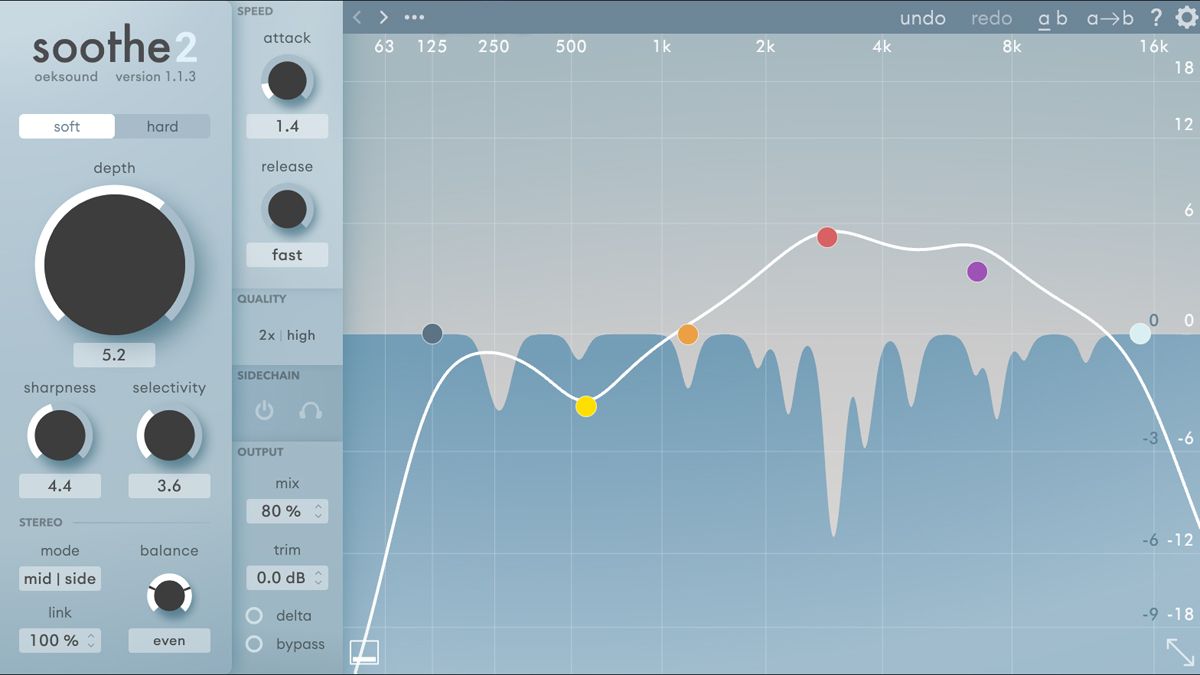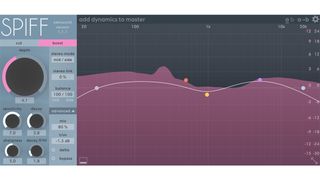oeksound’s soothe2 and spiff plugins give you a smarter way to reduce harshness and tame transients
Find out what these state-of-the-art processors can do for you

As musicians, we’re accustomed to hearing software developers making bold claims on behalf of their plugins, extolling their game-changing benefits. In a lot of cases, though, the devil is in the detail, and you need to consider the finer points of a plugin’s feature set to really appreciate what it can do.
Take oeksound’s soothe2, for example, a dynamic resonance processor that can identify problem frequencies and - yes - soothe them. Think of it as an advanced dynamic EQ that also offers bespoke spectral processing; you can use it to achieve a more balanced sound and save yourself from having to notch out frequencies by hand.
What’s more, soothe2 only kicks in where it’s needed, leaving nearby frequencies untouched. As such, the timbre of the original sound source is preserved, and you get transparent treatment with minimal artefacts.
Although soothe2 is easy to learn and use, it is worth drawing attention to some of its key features and controls, and thinking about when you might need to use them.
There are two modes of processing, for example: soft is great for general harshness removal and de-essing, while hard mode can be engaged when more serious processing is required (to tame a boomy bass take or a peak from a lead vocal, for example).
Beyond this, you can adjust the depth, sharpness and selectivity controls, which adjust the overall amount of reduction, width of the cuts and kind of cuts respectively. You can also adjust the speed with which soothe2 reacts to resonances - attack will slow it down, which is useful when you’re working with material with sharp transients (drum overheads, for example) while release adjusts the speed at which notches disappear after they’re no longer needed.
You can also adjust the amount of oversampling - you get a better frequency resolution for the processor to distinguish between resonances when this is increased. Higher settings here are useful when you’re dealing with low frequencies.
Throw in a flexible output section and the option to use mid/side processing and soothe2 becomes a supremely flexible tool. It’s particularly useful if you’re recording with a lower-quality microphone - you can use the plugin to smooth out nasty resonances and get closer to the sound of a more expensive mic.

We also need to tell you about spiff, oeksound’s take on transient control. Similar to soothe2, this analyses an incoming signal and only applies its processing to the parts that need it, cutting or boosting transients as required.
spiff shares many parameters with soothe2, but has its own specific set of skills and plenty of applications. If you start by turning on delta - the difference between the wet and dry signals - you can then turn up the depth to hear what spiff is reacting to. The sensitivity and decay controls then enable you to focus in on the transient material that you want to control. Following this process makes it easy to cut a part’s transients to push it back in the mix.
spiff can tame vocal plosive problems with ease, but it also works well on the likes of drums, guitars, keys and other transient-heavy instrumentation. Generally speaking, you’ll get the best results if you cut with a small window and linear phase (found in the advanced section) - this combination is great for surgical cuts in particular - and boost with a medium or large window and minimum phase. There’s always room for experimentation, though, and it’s worth bearing in mind that spiff can be used for creative as well as corrective purposes (by increasing the decay value, for example).
You can find out more about spiff and soothe2 on the oeksound website. You can download demos of both for PC and Mac, and it’s also worth noting that there’s a rare sale coming up - this runs from 2 to 5 April. So, whether you require resonance suppression of transient control - or maybe even both - now’s a great time to find out what oeksound’s plugins have to offer.
Get the MusicRadar Newsletter
Want all the hottest music and gear news, reviews, deals, features and more, direct to your inbox? Sign up here.